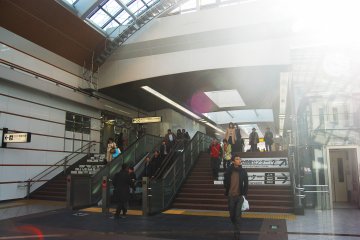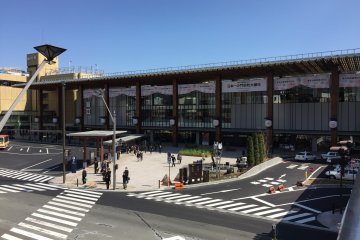Fireworks in Japan typically evoke summer nights—but winter fireworks have a charm of their own. The crisp air sharpens every colour, every burst, and every lingering spark, creating a spectacle that warms the heart despite the chill. Below are the highlights from this year’s event—so if this excites you, be sure to mark your calendar for next year, November 23rd, 2026!

Nagano, set in the heart of Japan’s main island and surrounded by the Japanese Alps, is known for summer hiking and world-class ski resorts in winter. Yet its most distinctive tradition arrives in mid-November, when the Nagano Ebisukō Fireworks Festival lights up the clear winter sky. For more than a century, this festival has transformed the cold into something magical.

Founded in 1899 to celebrate prosperity during the Ebisu Festival of Nishinomiya Shrine, the event has grown into one of Japan’s most respected fireworks showcases. This year marks the 119th edition, and Takahisa Tokutake, Managing Director of the Nagano Chamber of Commerce and Industry, noted that more than 5,000 VIP seats sold out, a testament to its nationwide popularity.

Each year, over 10,000 fireworks are launched—from 30 cm shakudama (尺玉) shells that bloom into enormous multicoloured spheres to precisely choreographed musical displays. Two of Japan’s leading fireworks companies mainly produce the show, attracting pyrotechnicians and engineers from across the country who come to study its cutting-edge techniques. Photographers—both amateur and professional—also gather annually, drawn by the astonishingly clear winter atmosphere that yields some of Japan’s most striking fireworks images.

Ebisukō, associated with the deity Ebisu, is tied to Nagano’s Nishinomiya Shrine and its traditions of prosperity, good harvests, and good fortune. The shrine celebrates prosperity in January and gratitude in November. Mr. Tokutake told me that the festival has rooted for the city during a typically quiet tourism window. By late November, the autumn foliage has faded and the ski season has yet to begin, yet the fireworks still attract thousands eager to witness one of Japan’s most unique seasonal spectacles.


Tips: It will be crowded on the day, so plan to arrive early and wear comfortable shoes. Not to mention, the festival is held outdoors, and it can get quite cold, so I highly recommend wearing proper winter clothing, including a Japanese body warmer, known as hokkairo.

After the Fireworks: Explore More of Nagano
Nagano is Japan’s fourth-largest prefecture by area—after Hokkaido, Iwate, and Fukushima. Exploring the entire region takes time, but on this short one-night trip I visited Chikuhoku Village, a beautiful rural community surrounded by the vast Japanese Alps.

Chikuhoku Village, home to about 4,700 residents, sits between Nagano City and Matsumoto. The scenery immediately evokes scenes from Ghibli films—Princess Mononoke, Totoro, and every lush, mystical forest you can imagine.



English support becomes increasingly scarce the deeper you travel into Japan’s countryside, but here, there is a welcoming exception.
Meet Mr. and Mrs. Coyte, and their friendly dog Cookie—owners of the guesthouse Silk and Soy. The former American media couple has transformed a historic farmhouse into a guesthouse and café, offering warm hospitality and full English-language support, with guided village tours available for travelers at an additional. Instagram: @silkandsoycafe

Guests enjoy a complimentary breakfast, and the café is open Thursday to Sunday from 10 am. to 6 pm., serving everything from English tea and fresh coffee to homemade meals and cakes—perfect comfort food after exploring the countryside.

Aging Japan and the Rise of Abandoned Houses, Akiya
Japan’s population has been shrinking for 14 consecutive years as of 2024. With declining birthrates and an aging society, abandoned houses—known as akiya—have surged across the country. Today, more than 9 million homes, or one in seven, sit vacant, according to the Ministry on Internal Affairs and Communications. Many remain untouched due to inheritance complications, relocation, or the challenges of maintaining rural properties.
Mr. and Mrs. Coyte saw an opportunity in this trend. They renovated a 160-year-old house and transformed it into a charming café and guesthouse, breathing new life into the heart of the countryside.

A Slice of Countryside Life
Mr. Coyte explained that the name “Silk and Soy” reflects the house’s original role during the Edo period, when it served as a merchant home dealing in silk and soy commodities. Nagano was once famed for silkworm farming until the early Shōwa period, just before World War II.
The café carries a beautiful vintage ambience—not only because of the old farmhouse architecture, but also due to six vintage ENG (Electronic News Gathering) cameras displayed in one corner. The interior blends retro charm with historic craftsmanship. The guesthouse, renovated by the owners and their friends, features preserved oak beams and earthenware walls—embracing visitors with more than just a place to sleep.

I highly recommend renting a car in Nagano; without one, exploring multiple sites in a single day becomes difficult. That said, if your goal is retreat, relaxation, or slow travel, wandering around the village on foot offers a peaceful and refreshing experience.


Chikuhoku is served by the Shinonoi Line, and the closest station to Silk and Soy is Nishijō Station, about 30 minutes away. Nishijō Station, in operation since 1900, once thrived on coal and silk shipments—a reminder of the region’s rich industrial past. Rich history is everywhere—enjoy exploring!

If you’re seeking additional travel inspiration in Nagano, here are some of the articles on nearby villages and Nagano locations:


























